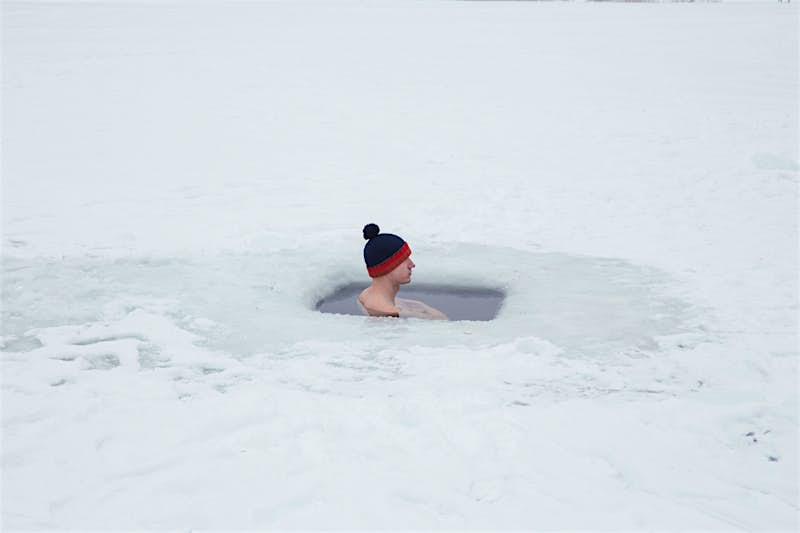The pursuit of a white Christmas can be a pricey endeavour if you head for the Alps or Scandinavia, but there are budget alternatives in eastern Europe. The Baltic State of Latvia is one of them, and some of the winter activities on offer are only for the very brave. Here's Lonely Planet's guide to winter adventure sports in Latvia.
Ice swimming in the sea
Got a crisp frosty morning after a night of snowfall? It's time to hit the beach! Latvia has 500km of stunning coastline lined with pine-covered dunes. For superhumans – there happen to be many of these in Latvia – winter is the best time for a swim in the sea. Ice swimming or dipping is part of the local culture and those who do it are known as ronis (seals) in Latvian or morzhi (walruses) in Russian. Look for them on the beaches of Vecāķi in Rīga's northern suburbs and at Jūrmala, south of Rīga.
When these folks encourage you to join in, they'll tell you that the sea temperature, at around 2–4°C, is warmer than the air temperature (around freezing point), so getting out after your dip is really pleasant. First, you just need to overcome that minor obstacle of undressing in the freezing cold and getting into the water. You’ll be rewarded with an adrenaline rush, and a feeling that you are now immune to all nasty viruses for the rest of winter.
Don't forget your towel. The ronis use these not just to get themselves dry, but also as a tool for a very vigorous self-massage, an essential part of the ice dipping ritual. You will also thank yourself for pre-arranging a thermos filled with hot tea (add fresh mint, lemon and sugar for an authentic experience) to warm you up after you put your winter clothes back on.

Run from a steam bath to an ice hole
The ice dipping culture is strongly intertwined with that of steam baths – pirtis in Latvian, or banya in Russian. There are a few steam baths by the sea, and some companies even deliver mobile saunas to favourite beach spots, but a classic pirts experience usually involves a lake. After warming yourself thoroughly in a steam room with temperatures of 60–100°C, you run briskly to the lake and dip into an ice hole. After time in the pirts, you'll be relieved to jump in the icy water, or at the very least, to walk around naked in the cold to cool down.
Cross-country skiing
When the snow cover is sufficiently thick, the beach turns into a natural track for cross-country skiing. The sea breeze and moisture means that the snow turns icy quite quickly, so you can glide freestyle for dozens of kilometres, watching the waves and inhaling the scent of the pine forest. Rent a car and skis in Rīga (try Uzvaras Parks Rentals) and then head to Vakarbuli Island in the mouth of Daugava river or the outer Jūrmala area. Both are about a 30-minute drive from the city centre.
Conventional cross-country skiing through the country’s forested terrain is a popular activity. The best skiing tracks are located in the resort town of Sigulda, some 60km north of Riga. Downhill skiing may not be the main draw in this fairly flat country, but well-organised short slopes are available both in Sigulda and on the country’s highest mountain at Gaiziņkalns, which rises 311m above the sea level. If it's downhill speed you're after, there's always the bobsleigh...
Bobsleigh experience
The bobsleigh and luge track in Sigulda was built in in 1986 to train Olympic champions. The real bobsleigh experience might be a bit too dangerous for the uninitiated, but visitors are welcome to slide down in a slower and softer version called Vučko, which reaches speeds of 75–80 km/h.
If you’ve ticked off any of these outdoor activities, it's time for a lazy stroll through the Christmas market in Rīga. Be sure to sample the country’s trademark drink, Rīga Balsam, a black herbal substance served with heated blackcurrant juice. Otherwise known as black magic, it blends perfectly well with the white magic of a Baltic winter.

Post a Comment